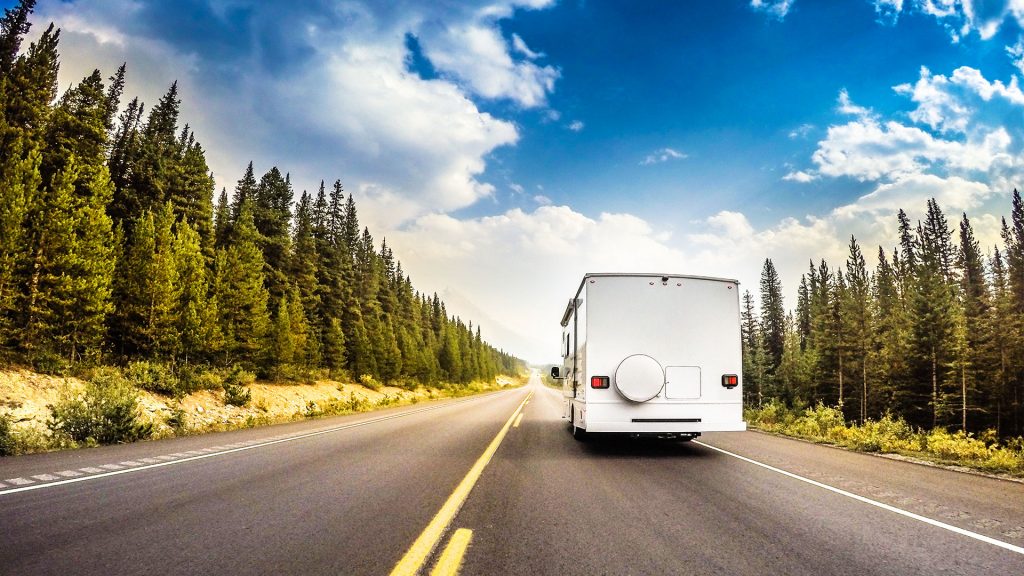RVing is a great adventure and there’s always something new to learn!
by Paul and Kerri Elders
This month, we’ll give you some food for thought about electrical safety and take a look at some easy breezy storage tips for your RV. Ready? Let’s go!
A FEW QUICK TIPS FOR ELECTRICAL SAFETY:
Electrical safety may not be very exciting, but it’s IMPORTANT. Especially in an RV. Here’s a quick rundown of some essential “Do’s and Don’ts” to help keep your rig safe and sound. First on the list: Never overload your electrical outlets. Resist the temptation to install a mini-network of multi-plug outlets throughout your RV (i.e. plug-in “outlet extenders” that convert a two-plug outlet to a four- or six-plug outlet). If you find you must use an extension cord, use it only temporarily and always use the shortest length extension cord you can find that will fill the bill. When unplugging any cord, grasp it around the plug grip; don’t simply pull on the cord itself, because you run the risk of loosening or even breaking the wires connected to the prongs, which can lead to shorts and trouble. And of course, it goes without saying that you should never use a cord of any kind that is frayed, has cracked or burned-looking insulation, or has obviously loose or damaged plugs.
When buying extension cords, it’s also a good idea to look for the UL (Underwriters Laboratory) seal of approval before purchase. Make it a habit to unplug all kitchen appliances and hairdryers after use. And if you travel with children, please use safety covers over all electrical outlets to protect them from their own curiosity.
SHORT-TERM STORAGE TIPS:
If you’re on the very last day of an RV adventure, it’s a good idea to take a few extra minutes to empty your holding tanks, either at your full-hookup site or at the park’s dump station. Then, when you get home, perform a few simple tasks to put your rig in “mini-storage” before your next weekend foray. Remove all perishable food from the cabinets, gather up all dirty laundry, and dust and vacuum the rig. Remove all food from the refrigerator and empty the ice bin. Turn off the refrigerator and clean its shelves and storage bins with a mild detergent and water (rinsing well) and then dry with a towel. It’s also a good idea to leave a small open box of baking soda inside the fridge compartment to help absorb any odors. Leave the refrigerator door open during storage, unless your Owners’ Manual advises otherwise.
Add a little bit of water to every drain (kitchen sink, bathroom sink, shower, commode seal, etc.); this will help add water to “p-traps” to keep the interior of the RV “insulated” from any possible fumes from the holding tanks while in storage. Turn off the water pump and heater. Close the blinds or shades, turn off the propane cylinders, and consider covering the tires if they’ll be exposed to sunlight. Make sure TV antennas, satellite dishes, roof vents, windows, etc. are in their stowed and locked positions.
Use a little WD-40 or other spray lubricant to lubricate exterior locks and hinges on your RV’s entry door. Don’t forget to check and see if your storage bin hinges and locks need lubricating, too. Lubricating electric steps and slideouts may be in order, as well. Before sliding in your slideout rooms, make sure all leaves, twigs, debris, etc. have been cleaned away. If you have a fifth wheel, you might want to lube the hitch to protect it from the elements.
If you’re storing the RV for a longer period of time, it’s a good idea to change the oil in the engine and in the generator. Contaminants in used oil are acidic; by changing to fresh oil BEFORE storing, you’ll help protect seals and bearings from corrosion. You’ll want to add a fuel stabilizer to your fuel tanks.
BATTERY STORAGE OPTIONS:
Fully charge your RV’s batteries and then turn off the battery supply switch. If your rig isn’t equipped with such a switch, carefully disconnect the battery terminal cables. This simple step will allow you to shut
off battery power to the RV, preserving your batteries’ charge
for your next trip.
Depending on what part of the country you live in and the length of time you want to leave your RV idle, you might just decide to store your RV’s batteries for the season. When storing batteries, always store them in a cool, dry area, and never set them directly on a concrete floor (this can ground the batteries, causing them to discharge completely). Instead, set them on a shelf, or, better yet, make a floor support for the batteries, simply by using a couple of short 2 x 4’s. Fully charging the batteries before storage can help prevent freezing issues. Now, remember to lock all windows, doors, and storage bays. Thanks to all your hard work, you’ll know that when you’re ready for your next
RVing adventure, your RV will be easy to pack and ready to go.
Happy Trails! ⎯
